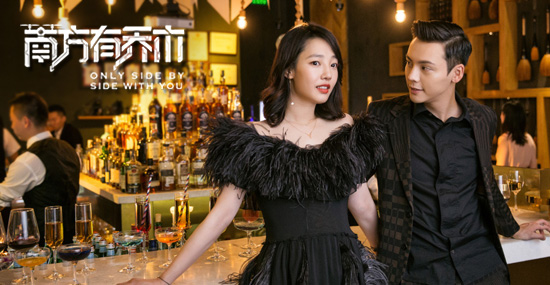教授作品音乐会
Professor Concert
林瑞玲 教授
Prof.Liza LIM
孕育
Inguz (fertility)
为 A 调单簧管和大提琴而作
For clarinet in A and 'cello
安良岡章夫 教授
Prof.Akio YASURAOKA
转印技法
Décalcomanie Ⅱ 为两把中提琴而作 For 2 Violas
姚晨 副教授
Associate Prof. YAO Chen
沧浪, 沧浪… Tsanglang, tsanglang... 为长笛, 古筝和中提琴而作 For flute, zheng and viola
陈泳钢 博士
Dr. CHEN Yonggang
短句
Kurzer Satz
为一把巴洛克小提琴而作
For a Baroque Violin Solo
梁雷 教授
Prof.LIANG Lei
听觉假设
Aural Hypothesis
长笛、单簧管、小提琴、大提琴、钢琴、颤音琴
For flute, clarinet, violin, cello, piano and vibraphone
2016 BEIJING INTERNATIONAL COMPOSITION WORKSHOP
2016 北京国际作曲大师班
温德青 教授
Prof.WEN Deqing
八卦
Divination
长笛、单簧管、打击乐、钢琴、小提琴、大提琴
Fl. cl. perc. pno. vi. vc.
2016 BEIJING INTERNATIONAL COMPOSITION WORKSHOP
2016 北京国际作曲大师班
演奏
PERFORMANCE
多伦多新乐团
New Music Concerts Ensemble (Toronto).
指挥 Conductor
长笛 Flute 双簧管 Oboe 单簧管 Clarinet 钢琴 Piano
打击乐 Percussion 小提琴 Violin 中提琴 Viola 大提琴 Cello
罗伯特 • 艾特肯教授
Prof. Robert Aitken
戴安娜 • 艾特肯女士
Ms. Dianne Aitken
基思 • 艾特肯森先生
Mr. Keith Atkinson
马克斯 • 克力丝汀先生
Mr. Max Christie
斯蒂芬 • 克拉克先生
Mr. Stephen Clarke
理查德 • 萨斯先生
Mr. Richard Sacks
科里 • 盖默先生
Mr. Corey Gemmell
道格拉斯 • 佩瑞
Mr. Douglas Perry
保罗 • 温德耐
Mr. Paul Widner
孕育
Inguz (fertility)
为 A 调单簧管和大提琴而作
For clarinet in A and 'cello
林瑞玲 教授
Prof.Liza LIM
Inguz(孕育)是为 A 调单簧管和大 提琴而作。作品创作于 1996 年,标题为 北欧古语,象征着生育,孕育,魁与“月 亮,直觉和人际关系协调的欲望”有关。 Inguz 是对大提琴与单簧管声响方面的一 次亲密研究。它在流动性和瘀滞之间探所 了乐器之间的整合及对比, 是音高和节奏 的和合性与差异性的产物。 在某些情况下 的两件乐器的音色感觉上相差无几,一种 音色悄然成长于与另一个音色的绞缠中; 而在另一些情况下,音色和音区的对比却 又是极端的。作曲家对此作品的孕育就好 像印度传统音乐拉格的阿拉普 ( 印度传统 乐曲的引子部分 ),即音乐是用于调节乐 器来建立一种情绪的。
Inguz (fertility) for clarinet in A and 'cello, dates from 1996 and the title refers to the Viking rune symbolising fertility, which is associated with “the moon, intuition and the desire for harmonisation in personal relationships”. Inguz is an intimate study of cello and clarinet sonorities. It explores these instruments’conforming and contrasting features amid a narrative of alternating mobility and stasis, the product of the passing congruences and divergences of pitch and rhythm. On some occasions the instruments’ timbres are virtually indistinguishable, the one growing out of or intermingling with the other; on others, the contrasts of timbre and register are extreme. Lim conceives of the work as being like the alap of an Indian raga, in which the music functions to tune the instruments and to establish a mood. (Programme note by Malcolm Gillies)
转印技法
Décalcomanie Ⅱ
为两把中提琴而作
For 2 Violas
2016 BEIJING INTERNATIONAL COMPOSITION WORKSHOP
2016 北京国际作曲大师班
安良岡章夫 教授
Prof.Akio YASURAOKA
我非常偏爱中提琴这件乐器。1988 年创作了《Offrandre》(为无伴奏中提 琴而作),1996 年创作了《Polyphonia》
(中提琴和管弦乐队),2011 年创作了 合 奏 协 奏 曲 第 2 号《Triangulum》, 这
I prefer Violavery much. In 1988, I composed Offrandre(for solo viola). In 1996, I composed Polyphonia with viola and orchestra. In 2011, I composed ensemble Concerto No.2 Triangulum. This piece reaches a balance between
2016 BEIJING INTERNATIONAL COMPOSITION WORKSHOP
2016 北京国际作曲大师班
部作品由中提琴、竖琴和颤音琴组成独奏 乐器组与管弦乐队相抗衡。
一方面,中提琴与小提琴和大提琴相 比,尽管演奏法上受到某些限制,却有独 特的音色,特别是低音区有一种深深的浮 雕感。另一方面,A 弦经常被形容为有“鼻 音”或者“带刺儿”的音色,但这种音色 带来了强烈的紧张感,极富魅力和表现力。
本作品受委约之初,我首先想到的是 采用多把中提琴编制,表现力丰富。不过 最终还是选择了二重奏这种演奏形式。
作品追求音的远近效果(Perspective)。 近音、远音(比如泛音)、混合音(如空 弦和泛音)以及稍有偏离的微分音,同时 运用了多种演奏法。空弦所发出的自然泛 音与人工泛音相交错,产生微妙的音程错 位,也是本作品中一个有趣的素材。
作品注重纵向的垂直音响多样性,而 横向的线性手法只在速度提升的乐思中偶 尔出现。
“Décalcomanie”( 转 印 技 法 ) 是借用一种绘画手法。原意是指,在有光 艳的纸上涂颜料,然后贴上一层纸,再把 这层贴纸取下后所偶然产生的一种绘画效 果的技法(可以联想一下被誉为“帕格 尼尼继承者”的作曲家——海因里希•威 廉•恩斯特的作品)。
两位演奏者奏出的音响和余音相 互继 承、混 酿,时而离反的过程正是 “Décalcomanie” 手 法。 音 乐 伴 随 着 偶然和即兴向前流动,在流动过程中,时 而被截流,再不断反复发展。
第二中提琴改变定弦,也是本作品的 一个特征。将 C 弦向下调低半音到 B 音, 它可以得到 C 弦所不能发出的泛音。后 来又将定弦恢复到 C 音,这些都是音乐 所组成的内容,希望能够注意到这些细节 的变化。
orchestra and a group of solo instruments, including Viola, harp and vibraphone.
On one hand,compared with Violin and Cello, Viola has a unique timbre, and it has a deep sense of relief especially in the bass register, while it is somewhat restricted in the performing techniques. On the other hand, the string of A is usually described as having a “nasal” or “prickly” sound, but this sound brings a strong sense of tension, full of charm and expression.At the beginning of accepting the commission, I firstly think of adopting more than two Violas for a vivid expression. But eventually, I choose duet as the performing form.
This piece is pursuinga sound of perspective effect, with near and remote tone(e.g. overtone), mixed tone(e.g. open strings and overtone) and microtone with slight deviation, and meanwhile, it applies various performing techniques. Natural overtone and man-made overtone made by open strings crosses with each other, and produces a subtle interval dislocation, which is an interesting material in this piece. This piece pays attention to the vertical acoustic diversity, while the horizontal linear techniques only appear occasionally in the ideas of speed acceleration.
“Décalcomanie”borrows from a kind of painting technique. Its original meaning is paintingon a bright and beautiful paper with color and covered with another piece of paper, and then removed the upper layer of paper, it brings an accidental painting techniques (you can associate this technique with a composer known as the "Paganini’s successor", Heinrich Wilhelm Ernst).
The acoustic sound and echo performed by the two players inherit and blend with each other, and even opposite to each other, which is “Décalcomanie” technique. Accompanied by occasional and impromptu features, the melody flows forward.In the process of flowing, the melody is sometimes stopped, and then repeated again continually.
The second Viola changes its string tuning, which is also a feature of this work. The C string is lowered semitone to B, and it can get an overtone that C string cannot produce. Then, it has turned back to C, which are contents to complete the music.I hope that you can notice these changes of detail.
沧浪, 沧浪…
Tsanglang, tsanglang... (2015)
为长笛, 古筝和中提琴而作
For flute, zheng and viola
姚晨 副教授
Associate Prof. YAO Chen
苏州的沧浪亭是灵感的发源地。沧浪, 古水名 , 水色青苍。对于作曲家的我来说, 就是水拍打苍青石板的声音, 每一次拍打 都幻化出声音的色彩与情绪,每一次拍打 都延展着声音的长度与深度。 水的潺潺低 语, 水的幽幽歌唱。正如清代诗人龚自珍 在他的《贺新凉》词中说道:“一棹沧浪水, 一行行淡烟疏柳,平生秋思”。请仔细聆 听沧浪,倾听声音本身。
"Tsanglang", which Yao Chen wrote in 2015 to commemorate his one year living in Suzhou, is music on a quest. The destination is the spirit of Suzhou's classical gardens and of the Tsanglang Pavilion in particular, whose sound gave the piece both its title and its basic idea.
The unique aspect of this garden is that its water pond is located outside the garden wall. When the wind picks up, the pond waves swell, as no garden wall is there to act as a buffer. The waves splash against the stones of the banks and produce a crisp, poetic and intimate sound, the "tsanglang".
When composing his piece, Yao Chen started by choosing the zheng, the Chinese instrument that for him has the most water-like qualities. Pairing it with flute and viola, as Yao Chen decided, makes comparisons to the flute–harp– viola literature inevitable. A devotee of French music, the instrumentation of this trio is not a coincidence. In general, the zheng acts to provoke and to imitate the "tsanglang" sound while the flute and viola are celebrated for their cantabile characteristics, expanding and intensifying the "tsanglang" sound.
"Tsanglang" begins with a crash, then a quiet long-lasting sound, then another crash, as the texture gradually thickens. The duality of the piece is thus established. Flittering and flickering alternate with passages of profound contemplation and introversion. The discourse rises and falls, much like the water that provided the inspiration. At several points, the music almost completely stops, leaving behind a murmur, a whisper, a hint of churning water.
There is a turning point near the middle of the piece, when momentum spirals out of control. As the music regains its sense of equilibrium, the sense of direction becomes clearer. After a detour, the pavilion is in sight.
2016 BEIJING INTERNATIONAL COMPOSITION WORKSHOP
2016 北京国际作曲大师班
2016 BEIJING INTERNATIONAL COMPOSITION WORKSHOP
2016 北京国际作曲大师班
短句
Kurzer Satz (2006)
为一把巴洛克小提琴而作
For a Baroque Violin Solo
陈泳钢 博士
Dr. CHEN Yonggang
为一把巴洛克小提琴而作(2006)。 欧洲的巴洛克音乐以及中国的传统太极拳 都是作曲家本人日常欣赏的事物。作者认 为,典雅的气质是这两者的共有特点。这 首小曲抒发出作者的这种理解,并在写作 上试图表达出太极拳的轻松自然、舒展简 洁、动静随意、绵绵不断的特点。同时, 或多或少地体现出作曲家在当时创作上的 某种追求——连绵不断的语句陈述方式。 此曲曾获德国 Max Rostal 比赛新作奖, 并成为当年小提琴比赛必奏曲目。
For a Baroque Violin Solo(2006). Baroque music in Europe and Chinese traditional Tai Chi are appreciated by the composer himself. The composer believes that elegance is the common character of these two things. This piece shows this elegant understanding and tries to embody the characteristics of Tai Chi with relaxed and natural expression, stretching and concise movement, random combination of dynamic and static process, and continuous factors. Meanwhile, it embodies more or less the pursuit of the composer in the composition at that time, the uninterrupted methods of phrasal expression. This piece has ever awarded the new masterpiece prize in German Max Rostal competition and should necessarily be performed during the violin competition of that year.
听觉假设
Aural Hypothesis (2010)
长笛、单簧管、小提琴、大提琴、钢琴、颤音琴
For flute, clarinet, violin, cello, piano and vibraphone
梁雷 教授
Prof.LIANG Lei
周文中先生和我有过多次难忘的交 谈。他曾说 ,“书法是笔墨的音乐,音乐 是声音的书法。”这首作品是提献给周先 生的,也是受到他的思想的启发,促使我
Professor Chou Wen-chung once made the remark, “Calligraphy is music in ink, and music is calligraphy in sound.” Recalling many inspiring conversations with him, Aural Hypothesis is a quasi-
进一步对音乐中的线条进行研究。可能与 周先生不同之处在于我这首作品中的线条 不 是 中 国 书 法, 而 是 更 加“ 原 始” 的 线 条—— 可疾可徐的直线或曲线。
《听觉假设》
由 Jebediah Foundation 基 金 会 赞助,由美国 Boston Musica Viva 乐团 委约,并于 2010 年 10 月 1 日在波士顿 Tsai Performance Center 首演。
fantastical study on how lines may find expression in sound. The lines in this piece, however, are not modeled after traditional Chinese calligraphy; they are something more basic or primal: a simple curve or a straight line, drawn with intense attentiveness or explosive speed.
With a grant generously provided by the Jebediah Foundation, Aural Hypothesis was commissioned by Boston Musica Viva and dedicated to Prof. Chou Wen-chung. The first performance was given by Boston Musica Viva on October 1, 2010 at the Tsai Performance Center in Boston, MA.
八卦
Divination (1997)
长笛、单簧管、打击乐、钢琴、小提琴、大提琴
Fl. cl. perc. pno. vi. vc.
温德青 教授
Prof.WEN Deqing
中国古人的理想是天人合一。八卦所 象征的“地、山、水、风、雷、火、泽、天” 在乐曲中得到自然主义的表现,因为音乐 不仅是可以听的,它也是可以“看”的。 演奏家在演奏自身乐器之外还得演奏其他 的日常器皿和念咒语,因为音乐无所不在。
作品受 瑞士国家艺 术基金会 Pro Helvetia 的委约。
The ideal of antique Chinese was the nature and humanity is a unity. For predict future, the 64 hexagrams of the Book of Mutations is based on the combinations of eight elements, namely the Earth, the Mountain, the Water, the Wind, the Thunder, the Fire, the Marsh and the Sky. Although this piece simple to depict a ceremony of divination and the eight elements above, but it reflect yet more the human feelings. The fusion of the two aspects result of a development in the music. Moreover, the structure of musical material is inspired by the philosophic theory of Yin and Yang. Here, I use lot of uncommon instruments, borrow in the daily life. Because the music is omnipresent!
Commissioned by the Art Council of Switzerland Pro Helvetia.








 动物系恋人啊 | 钟欣潼体验爱情哲学
动物系恋人啊 | 钟欣潼体验爱情哲学 南方有乔木 | “科创CP”渐入佳境
南方有乔木 | “科创CP”渐入佳境 魔都风云 | 周冬雨任达华演父女
魔都风云 | 周冬雨任达华演父女







我来说两句排行榜